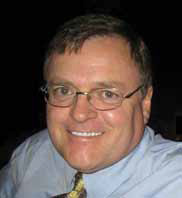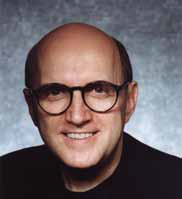Quick Bio
John Stiernberg (john@stiernberg.com) is founder and principal consultant with Stiernberg Consulting. John has over 30 years experience in the music and entertainment technology field. He currently works with manufacturers, publishers, inventors, investors, and trade associations on strategic planning, market development, and M&A projects. Bill Murphy (audiovideobridging@extremenetworks.com) leads Extreme Networks efforts to deliver switching for the professional AV Industry. A key component of that effort is broad support for AVB across Extreme Network’s families of switches from 100 Mb to 100 Gb. Extreme is part of the AVnu Alliance. He is also responsible for Extreme’s efforts in the CCTV/surveillance industry.

This month, SCN is debuting a quarterly feature delving into the ongoing convergence of AV and IT. We’ve selected two experts in their respective fields, John E. Stiernberg for AV, and Bill Murphy for IT, to answer questions that many integrators have on this subject. If you have any questions you’d like to have answered in the future, tweet them to us @scnmag or email Kirsten Nelson at knelson@nbmedia.com.
SCN: In what areas of expertise can AV designers and installers offer the most value to IT personnel?
John E. Stiernberg: There are two important things for IT people to reckon with: 1.) AV is a different discipline from IT (and thus the question), and 2.) AV system design is a different discipline from installation.
System designers (whether they work for independent design consulting firms or design/build contractors) can offer value to IT people by showing them how the analog and digital worlds come together for the benefit of the end-user or client. There’s an art to it that is new or scary for black-and-white ones-and-zeroes thinkers. The analog part includes how signals flow from microphone through to speakers while graphics and video are projected on a screen.
Installers can help IT integrators deal with the pure construction aspects of system projects, like dealing with tradespeople on coordinating project schedules. Some IT people are already good at this. For others (especially the box houses), it’s a new world.
Bill Murphy: I agree with John’s comments. For IT people, they think of AV at a simple level—as just more bits to move. They have many applications and their initial reaction to having AV move from a standalone system to a converged IT network will be: how much pipe is needed, how does this affect my other services, and is there anything special I have to do.
AV designers can help here by letting their IT partners know that they need predictable latency and precise sync, and why they need it. AV, particularly live sound, is VoIP on steroids for an IT guy. They are used to a world where they usually deliver good sound for a speakerphone or call but don’t have to deliver great sound all the time. So there is an understanding issue for the IT professional. He will have to adjust his network to deliver that.
With the overlay AV latency and sync provisioning, technologies like CobraNet will have to adjust the traffic prioritization in each switch. In the AVB world, he will slice off a piece of bandwidth on each switch and the AVB protocol will manage sync and latency within those slices.
SCN: What is the largest threat to the AV business model posed by the IT business?
JS: The biggest business threat is the risk of losing enterprise customers. In some cases, this can’t be avoided. The client (corporate, education, government, etc.) will decide whom they want to work with based on a variety of factors. A common perception is that clients 1.) only decide on price, 2.) will award the job to the lowest bidder, and 3.) get burned when the technical work is shoddy or incomplete. While this does happen all too frequently, it can be prevented through collaboration between AV and IT firms.
BM: I think the IT VARS will come into this space and they will view it as just another app. They will win the less demanding sound applications but they will not be able to excel in the “I need great sound” applications. There they won’t be able to do the “art” and the event management. I expect that rather than be defined by organization size, it will be defined by how important great sound is.
SCN: As the hardware-salescentric model is left behind, what is key to developing a successful service-based business?
JS: There are multiple business models on each side of the AV/IT equation. Some firms just sell boxes; others are full systems solution providers. The key to developing the service side starts with understanding how the end-user client makes purchase decisions combined with understanding what they need beyond price and availability of hardware and software. Clients need what systems integrators (both AV and IT) do: 1.) pre-design consultation, 2.) system design, 3.) project management, 4.) installation, 5.) commissioning, 6.) user training, and 7.) periodic maintenance.
BM: I agree with John’s comments. I am watching my SEs—all networking experts interact with our AV vendor partners’ SEs. I think IT guys will have no trouble getting the systems installed and functioning… to a point. They will have trouble tuning the DSPs to make great sound. So I think the hardware sales will be reduced for simpler equipment but I think there will be little effect for the kit used to “paint” with sound.
I think as IT buyers begin to understand this they will reach out and want the sound part designed and installed by people with that tuning skill. They will do the “enable the network” part. The installation, I think, will also be left to the AV installer, except for the IT backbone connections, which IT will supply.
